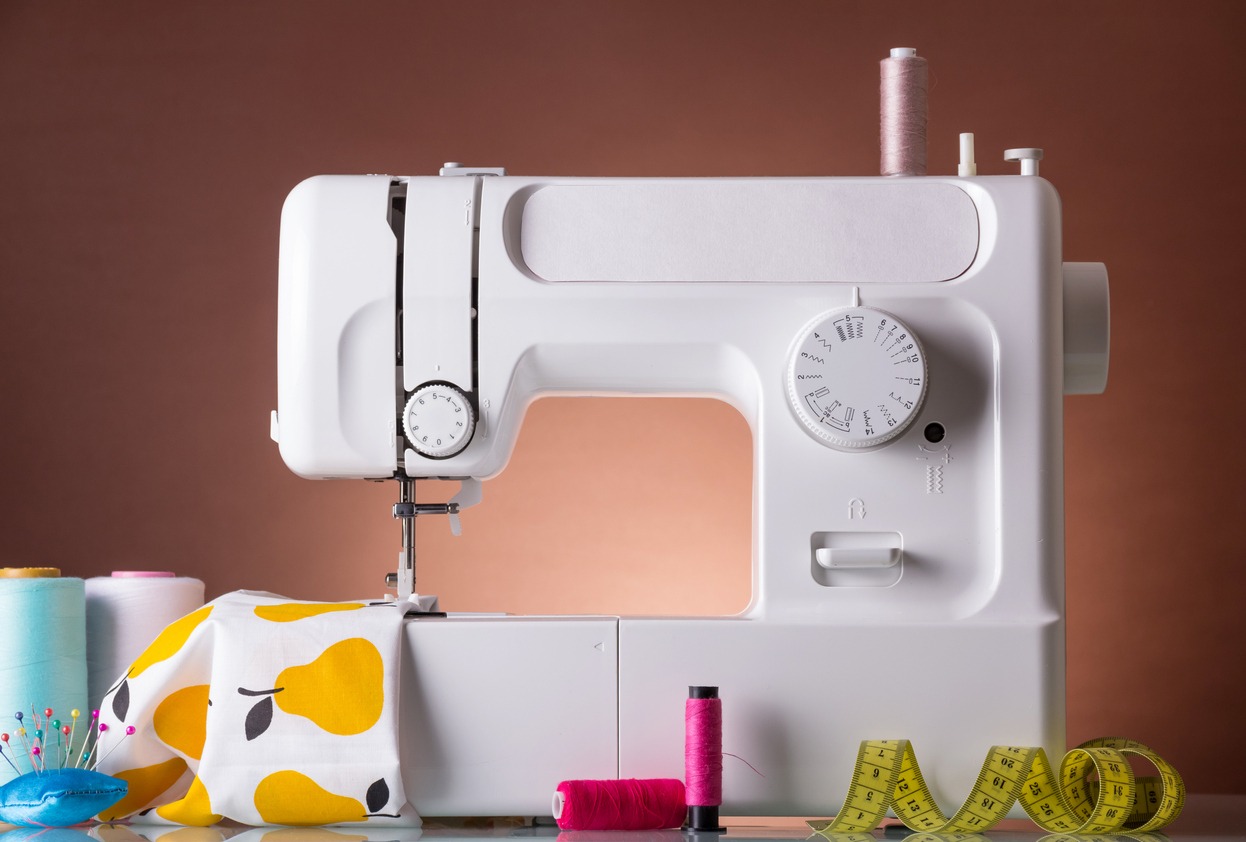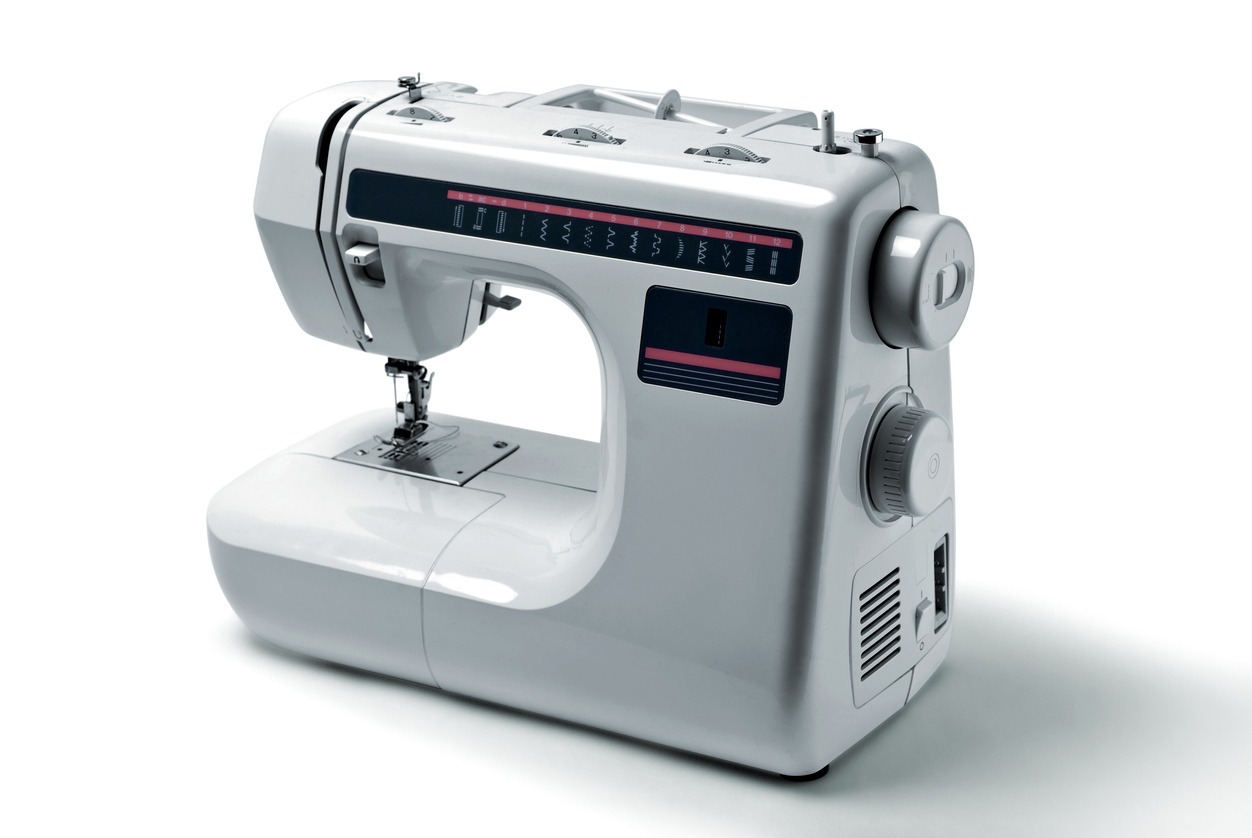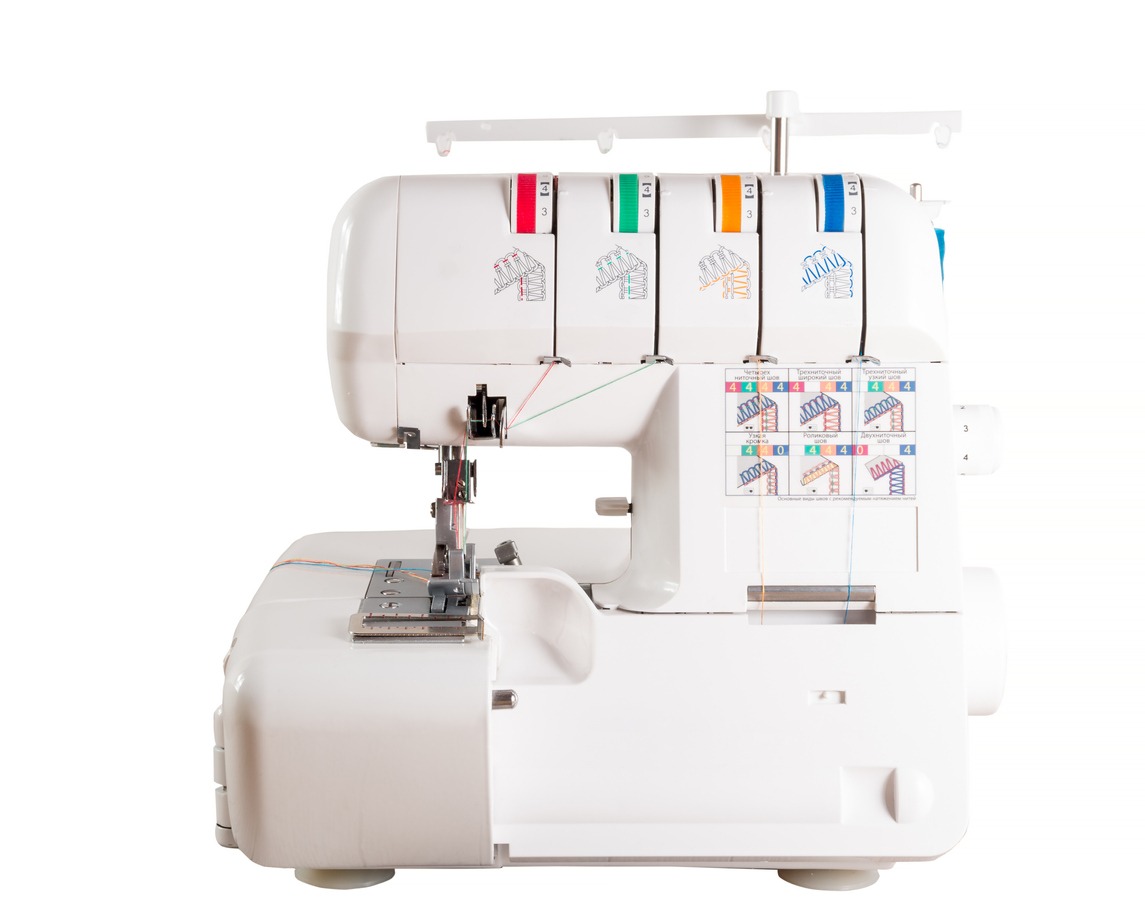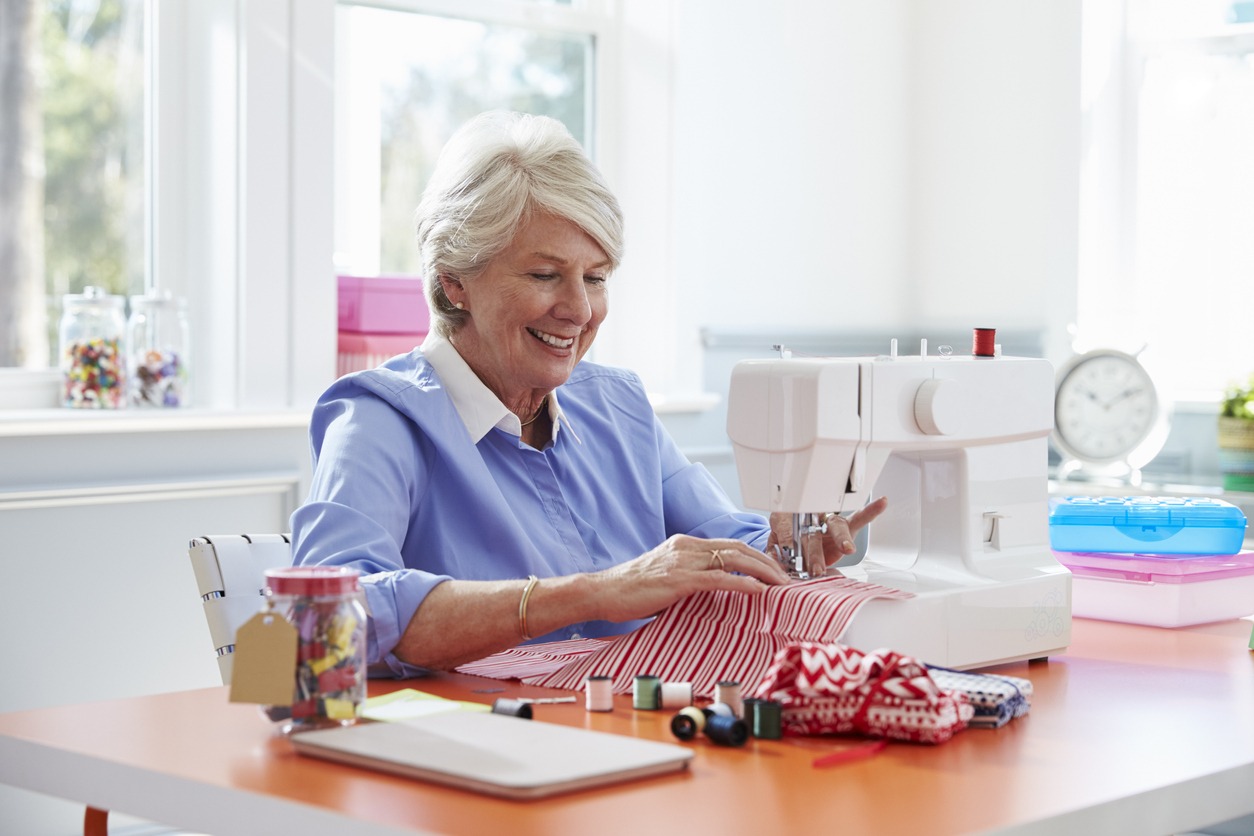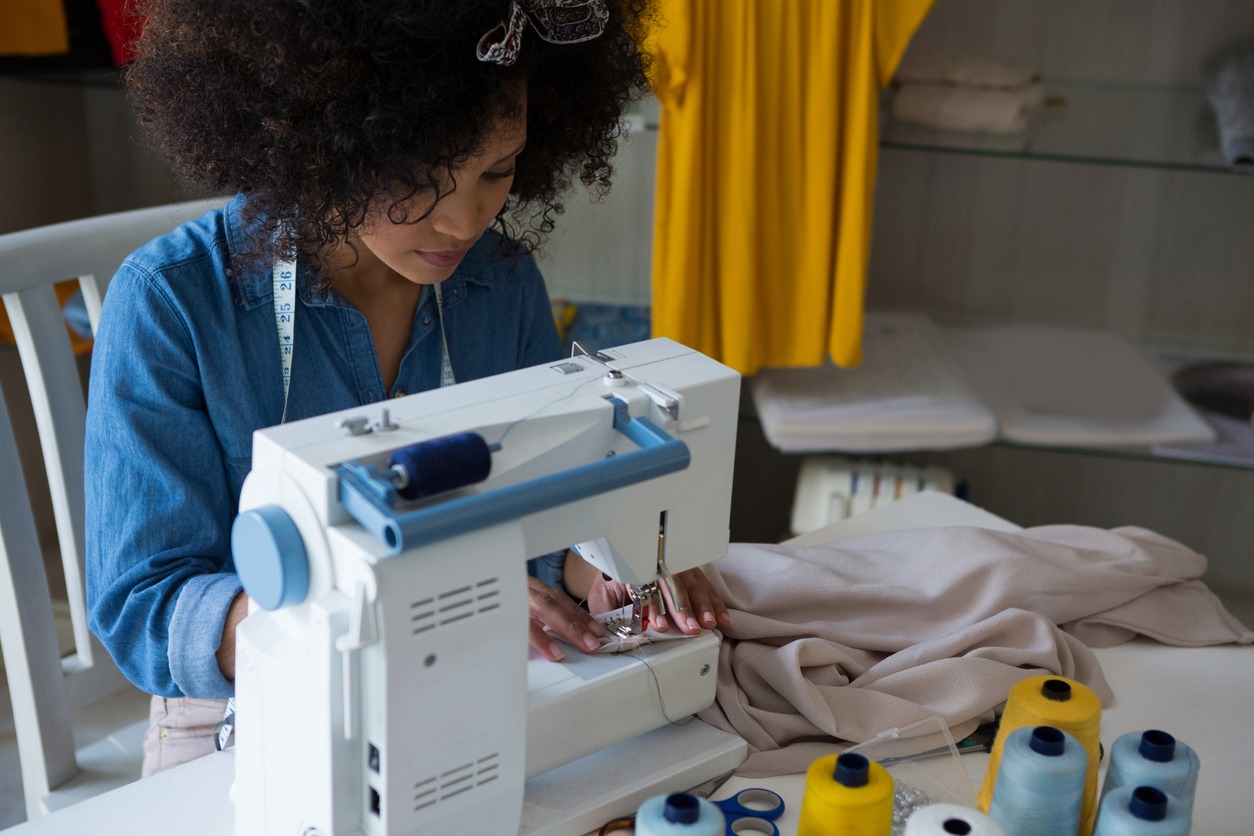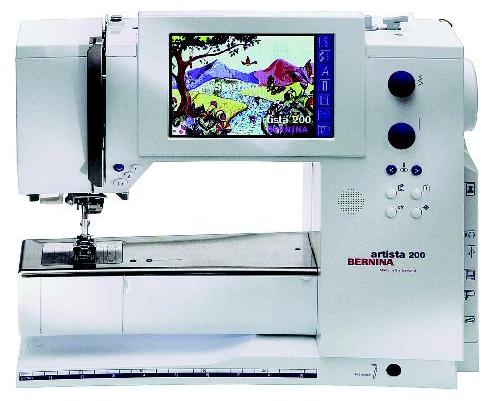Some people are blessed with imaginative minds, creative hands, and an eye for fashion and style. If you are one of those folks, you love to create unique dresses (such as those for cosplaying), drapes, bed sheets, etc. Thus, you definitely need the needle power. However, your hands need considerable assistance. For that, the latest sewing machines out there can make your work easy regardless of your skill level.
If you’re on the search for a sewing machine that will get the best value for your money, this article will help you.
Types of sewing machines
 Mechanical sewing machines
Mechanical sewing machines
Nowadays, mechanical or manual sewing machines are now reduced to being a novelty or curiosity item. They are getting extinct as electronic and computerized sewing machines have replaced them. A mechanical sewing machine only provides the essential functions that you have to operate by hand, which might be difficult and tiresome. Besides, it is only suitable for light to medium fabrics.
Mechanical sewing machines are still being widely used in many developing countries where electricity is not readily available. Most mechanical sewing machines also function as handsome pieces of furniture, such as a side table, when the machine is tucked under when not in use.
Modern mechanical sewing machines are equipped with few new features that make the task slightly easier, such as automatic needle threading.
Electronic sewing machines
Electronic sewing machines replaced mechanical or manual sewing machines by making the sewing process easier and quicker because it uses electronic power. It has a built-in motor that controls the needle, enabling excellent sewing speed, high precision, jerk-free working, and better stitch control.
Like the mechanical sewing machine, the electronic sewing machine has a foot pedal on which you operate the motor. But in the electronic sewing machine, its foot pedal allows both hands to be pretty much free, so you can simply guide the fabric with your hands through the feeding mechanism. Dials, buttons, or LCDs are given to select the controls.
Computerized sewing machines
Computerized sewing machines are the latest and most powerful sewing machines available in the market. Computerized sewing machines are a pure work of technology that produces flawless and high-quality stitching. They have features like buttonhole formation, style, tension control, sewing speed, and the list goes on. Some models even have a touchscreen LCD to simplify operations and controls. These machines can be pretty costly and are mostly used by professionals. Consider this sewing machine if you want to start from the basics to an expert level in high-quality and professional stitching.
Serger machines
Also known as overlocking machines or sergers, serger machines are mainly used for seaming or overlocking the fabric. It is done by joining or sewing the edges of the fabric together, which can be difficult to stitch. Serger machines are mostly used by professionals and tailors to give a finalized and finishing touch to the cloth being sewn. A serger can make multiple stitch patterns, ranging from a single-threaded overlock stitch to five threaded overlock stitch.
Features you should look for in a sewing machine
Lightweight design
Most sewing machines are bulky and heavy. If you have just begun to learn to operate a sewing machine, you need one with a lightweight design so you can carry and place it in your car easily when you want to go to your sewing lessons or take your sewing anywhere.
Various built-in stitches
If you are still learning to operate the sewing machine, you may not need that many stitching styles. However, your machine should have at least some basic stitches like the straight stitch, backstitch, zig-zag stitch, button stitch, etc. These various styles can extend your capability to get more out of your sewing machine.
Multiple speeds
This feature assists you in controlling the speed at which the fabric moves under the needle, for instance, if you are working on a large piece of fabric and want to sew its edges in a straight line. In this case, you may get the advantage of this feature as it can maintain a constant speed throughout.
Foot pedal
A foot pedal is great for running the machine in hands-free mode, so you can easily use both hands to adjust the fabric to the right place. Always look for a stable and decently sized foot pedal with an anti-slip base that ensures a firm grip while you sew.
Needle threader
Most modern sewing machines come with an automatic needle threader. While the needle threader is helpful to almost everyone, it is of great benefit, especially to people with weak eyesight or dexterity challenges, as this feature automatically puts the thread in the needle for you. It saves you from the difficulty of threading the needle.
Machine fabric feed space
The machine fabric feed space is an optional feature. If you are working with larger swaths of fabric, you may need this feature. Some sewing machines have an extended feed space to allow you to handle larger pieces of fabric, such as drapes or bed sheets easily and efficiently. The feed space also reduces the need to repeatedly change and adjust the machine’s position.
Top-load bobbin
The era of sewing machines is long gone in which you had to open the entire recessed compartment to check whether the bobbin was running low on thread. You don’t have to go through such a problem with modern sewing machines. You can simply slide the panel open and drop the bobbin in, and a transparent cover is given to see if your thread is running low.
Noise level
An average sewing machine’s noise levels range from 65 decibels (dB) to 80dB, depending on its build quality and working mechanism. A sewing machine producing a noise over 70dB is considered loud, but it is not uncommon for heavy-duty sewing machines. If you are looking for a sewing machine that is much less noisy, go for one with noise levels of 65dB and below.
Portability
Portability is one of the first things you should consider when shopping for a sewing machine. You will likely carry it from one room to another or when traveling, especially if you are a clothing designer or a sewing enthusiast. You will find several compact-sized sewing machines that are nearly as powerful as the standard models.
Warranty
Warranty is another crucial factor when looking for a sewing machine. Most sewing machines today carry good warranties. You don’t have to worry about the machine’s warranty expiring before you’re done using it or have it upgraded. But a good warranty ensures repairs or replacement from the manufacturer if the sewing machine has any factory defects.
Reasonable price
Budget is a natural concern when investing in an appliance such as a sewing machine. It may be tempting to purchase a sewing machine with a low price tag. But if you are just learning to operate a sewing machine, look for the one with all the features you need at a price you can afford. What’s the point of getting a sewing machine that you have to replace or send to a repair shop after some time because it doesn’t have all the options you find out you need and doesn’t last long after only a few uses? It will also mean unnecessary additional expenses.
To avoid such trouble, get a sturdy sewing machine with all the features you’re looking for – a machine that you know you’ll use for a long time. You must remember that the sewing machine you’re going to buy should give you the best value for your money. Also, if you’re going to use it only occasionally, then looking for a machine with essential features and keeping the cost down will make sense.
For beginners – things to look for in a sewing machine
- If you’re just starting to learn sewing with a machine, you will need at least three stitch options: reverse, zig-zag, and straight. These options can help you stitch with versatility, from making basic stitches to creating customized designs with them.
- You should also look for at least three stitch lengths to help accommodate various sewing projects. Look for a machine with a stitch length from 0 to 5 mm.
- It is great to have a reliable foot pedal that will reduce certain issues, such as jamming and bunching, that you may encounter when operating the machine manually. A dependable foot pedal also allows faster and more efficient sewing.
- Choose a machine with an automatic needle threader. It will save you a lot of time and prevent your eyes from getting strained, a common problem when you try to put the thread into the needle’s eye with your hand.
Top sewing machine brands
Here are the brands that dominate the sewing machine industry:
Bernina
Bernina is one of the world’s top sewing machine companies, founded in 1891 by Swiss inventor Fritz Gegauf. The company derived its name from Piz Bernina, a mountain in the Swiss Alps. As one of the most respected sewing machine brands, Bernina produces top-range and mid-level sewing machines of high quality and performance. However, Bernina’s sewing machines are usually more expensive than the other brands. But, as we say, you get what you pay for!
Brother
Brother is a Japanese multinational electronics and electrical equipment company founded in 1908. It is known for its wide array of products, from manufacturing printers to commercial and domestic sewing machines.
Janome
Janome is another Japanese global company founded in Tokyo in 1921. It offers a wide range of top-quality sewing machines for home and commercial use, sergers, and cover stitch machines. It was the first company to make a computerized household sewing machine and enjoys a substantial market for home embroidery machines, thanks to its “memory craft” series.
Juki
Juki is yet another Japanese global company primarily known for its sewing machines, although it also manufactures surface mount technology (SMT) assembly systems and solutions. Founded in Tokyo in 1938, Juki offers a wide range of high-quality domestic and industrial sewing machines, including electronic and computerized sewing machines and sergers.
Singer
Singer needs no grand introduction – its familiar name, long history of success, and vast market share in the sewing machine industry are truly undeniable. It was founded in 1851 by Isaac Merritt Singer, the inventor of the world’s first domestic sewing machine. When you see the brand “Singer” on a sewing machine, you know you’ll be getting a dependable and quality product that is steeped in history, good reputation, and quality.
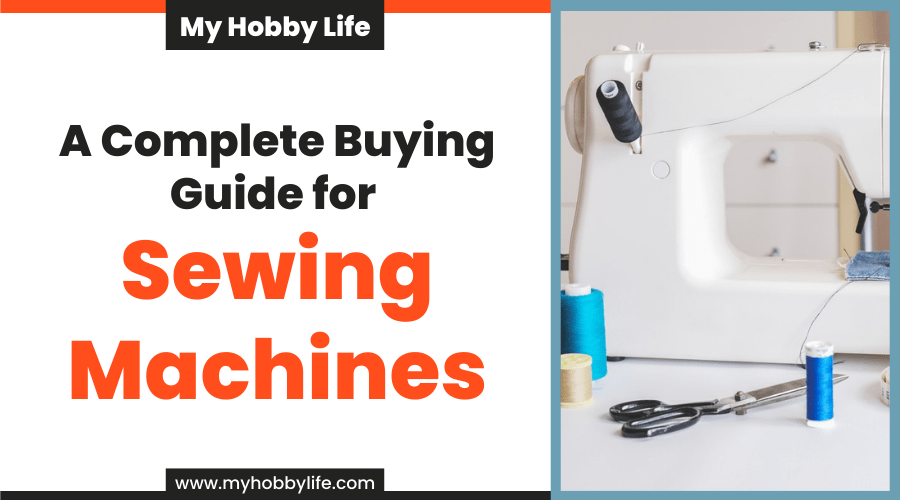
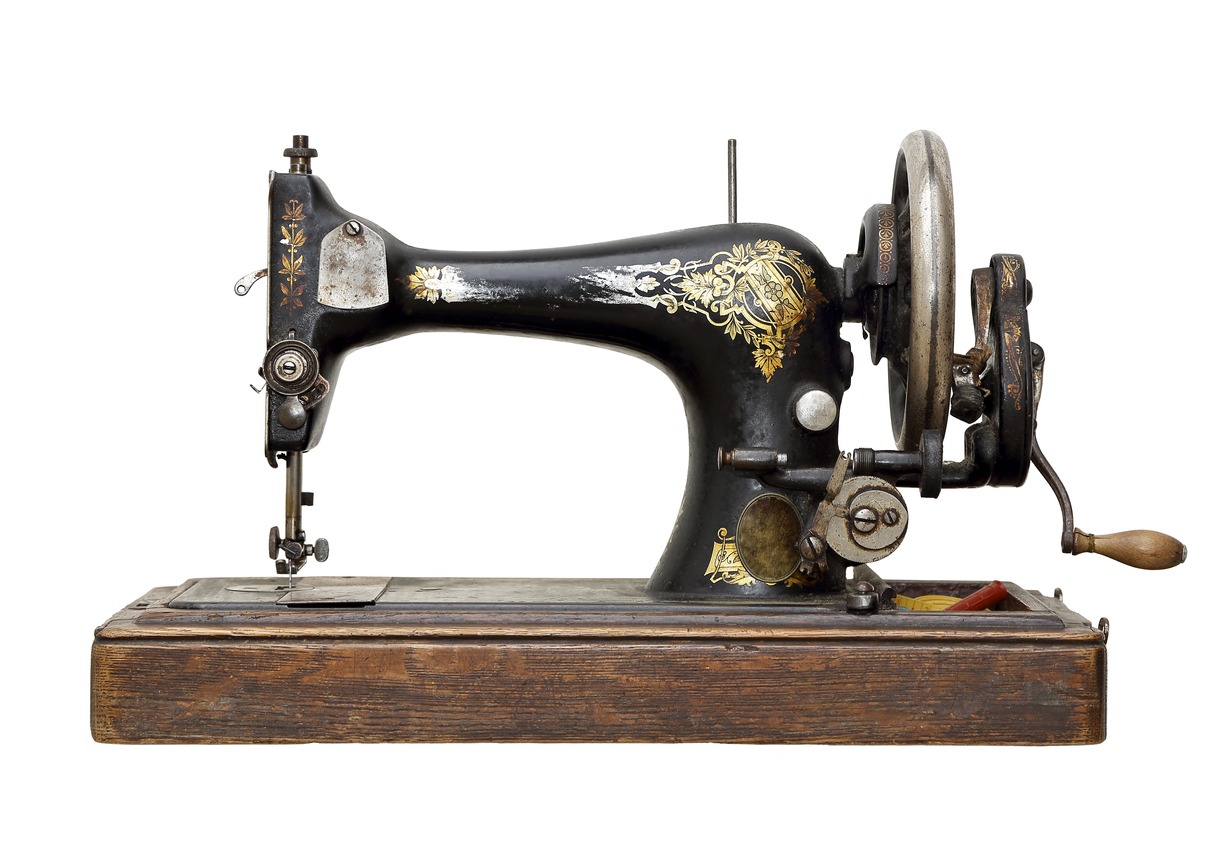 Mechanical sewing machines
Mechanical sewing machines